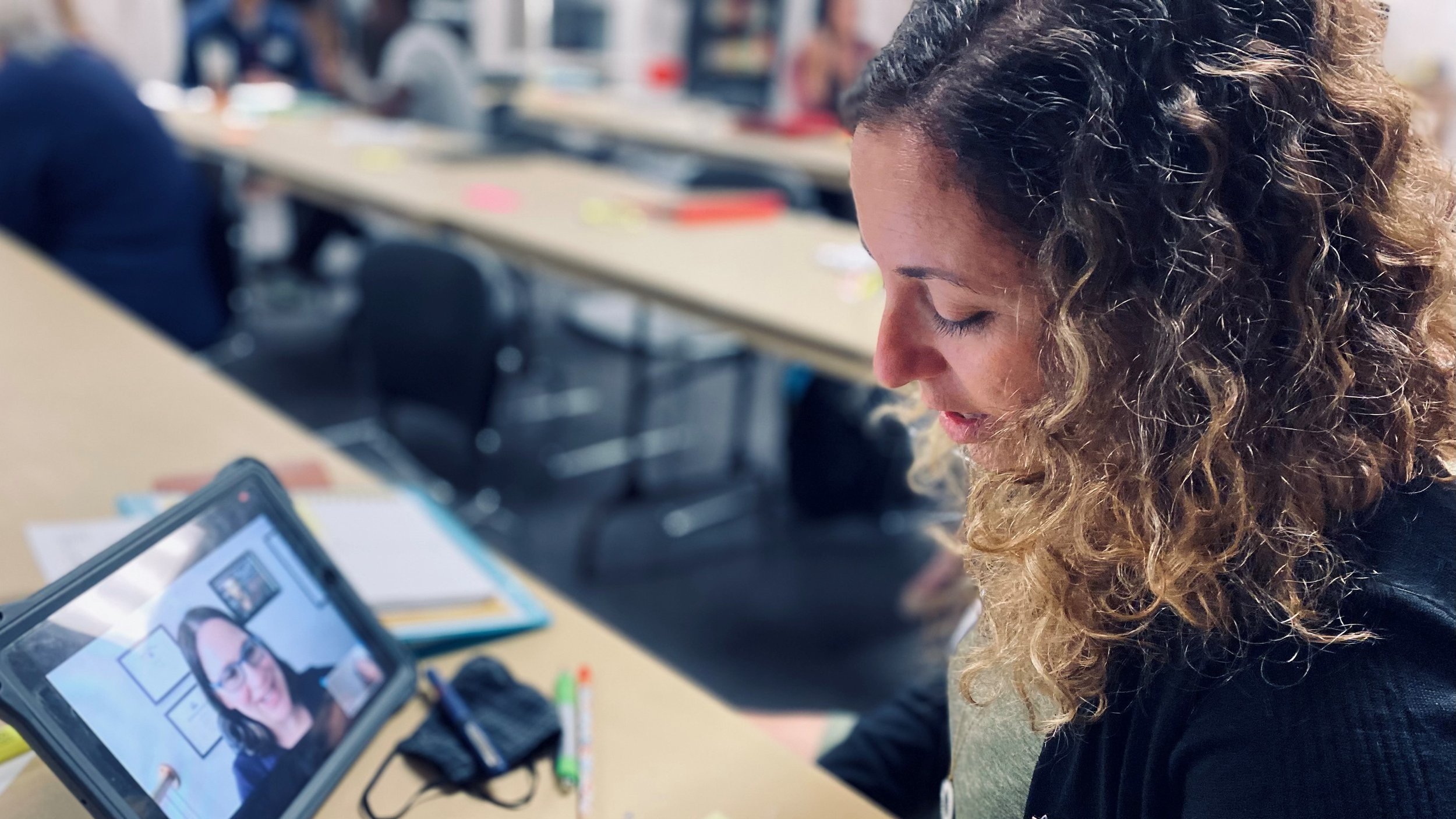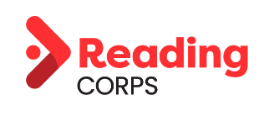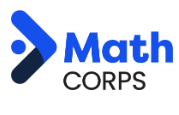
Support Services
Special Services Program Information & Contacts
Special Education
Special education at Agamim is driven to ensure each student learns—intellectually and morally—at the highest level. We prioritize an inclusive learning environment in which students are with their homeroom peers and teachers as much as possible. This inclusion model ensures all teachers in the special and general education setting know each of our students well as learners and as growing young people with skills, passions, knowledge, insight, and agency. Inclusion in a classical education program elevates the work of all our special services programming as classical is rigorous, important, and inspiring by design. We help all students succeed in a variety of models—full inclusion in the homeroom with supports, co-teaching in the homeroom setting, partial day pull-out services, one-on-one and room-based supports, and more. Our teachers collaborate closely to ensure our special education programming is truly specialized/personalized, culturally responsive, and dedicated to advancement for all.
Contact:
Dr. Barber sbarber@agamim.org
Title 1
Title I, Part A (Title I) of the Elementary and Secondary Education Act, as amended by the Every Student Succeeds Act (ESEA) provides financial assistance to schools with high numbers or high percentages of children from low-income families to help ensure that all children meet challenging state academic standards. Federal funds are currently allocated through four statutory formulas that are based primarily on census poverty estimates and the cost of education in each state.
Agamim’s Title I programming is focused on advancing math and/or reading excellence for each scholar who qualifies for Title I services.
Contact:
Ms. Plaisance, mplaisance@agamim.org
Multilingual Learning (ESL)
Agamim scholars come to us from all over the world, and our Agamim families speak over 20 different home languages. 50% of our students also have at least one immigrant parent, and 100% have chosen Agamim for their children’s learning, safety, and care. Our cultural, racial, linguistic, and ethnic diversity strengthens our school and proves that classical education’s focus on intellectual, moral, and civic excellence is not unique to the West; it is global. We are driven to provide an academic program and school environment that is assets-focused, culturally responsive, knowledge-intensive, and language rich. Multilingual scholars at Agamim think and communicate in powerful ways when we leverage their home language, background knowledge, interests, experience, and perspective. Activating all of these assets helps our multilingual learners successfully advance their learning through one-on-one, small group, and whole class instruction.
Contact:
Mr. Elkins, delkins@agamim.org
Agamim’s Language Instruction Educational Program (LIEP) document is designed to show families how English Learner services are conducted in our academy.
Reading Corps
(From the MN Reading Corps website):
Reading by Third Grade is the Gateway to Learning
Right now, nearly one in three third graders in Minnesota is failing to reach basic levels of literacy. If kids aren’t reading proficiently by third grade, the odds are against them for all future learning. Because of this, our nation is facing an epidemic of academic failure.
By using innovative, evidence-based practices and personalized tutoring, Minnesota Reading Corps has demonstrated proven results to help close Minnesota’s growing achievement gap. Nearly 80% of Minnesota Reading Corps participants achieved more than a year’s worth of progress in one year’s time, exceeding state and national averages and dramatically surpassing what is typically expected. (Read more research about Reading Corps on our Center for Advancing Research to Practice page.)
Since 2003, Minnesota Reading Corps has grown from serving 250 children to about 30,000 at more than 800 sites statewide. Studies show that by increasing investments in quality early childhood literacy interventions, the whole community can anticipate a return of up to $12 for every $1 invested.
Agamim Contact:
Mr. McCarthy, dmccarthy@agamim.org
Math Corps
We’re committed to continuous improvement. Our programs are unique because we’re always adapting for the best results. Out of that research and evaluation comes new initiatives to provide a specific solution for a growing need. Like our K-3 Math Initiative.
Researchers can predict a student’s high school trajectory based on math skills measured over 10 years prior. This is why it is so important to build strong math skills as early as possible. After hearing the need for earlier investment in math education, we’ve designed an initiative supporting students in kindergarten through third grade.
The goal of our new K-3 Math initiative is that students will receive evidence-based math support and stay on the trajectory to pursue STEM programming and careers. The K-3 Math Initiative is currently being studied at sites in Minnesota and Georgia.
Agamim Contact:
Ms. Plaisance, mplaisance@agamim.org
PSEO
Postsecondary Enrollment Options (PSEO) is a program that allows 10th-, 11th- and 12th-grade students to earn both high school and college credit while still in high school, through enrollment in and successful completion of college nonsectarian courses at eligible participating postsecondary institutions. Most PSEO courses are offered on the campus of the postsecondary institution; some courses are offered online. Each participating college or university sets its own admissions requirements for enrollment into the PSEO courses. Eleventh and 12th-grade students may take PSEO courses on a full- or part-time basis; 10th graders are eligible to enroll in PSEO on a more limited basis (see note below). Students must meet the PSEO residency and eligibility requirements and abide by participation limits specified in Minnesota Statutes, section 124D.09. If a school district determines a pupil is not on track to graduate, she/he may continue to participate in PSEO on a term by term basis.
By March 1 of each year, or three weeks prior to the date a student registers for courses for the following school year (whichever is earlier), schools must provide PSEO information to all students in grades 8-11 and their families. To assist the district in planning, a student must inform the district by May 30 of each year of their intent to enroll in postsecondary courses during the following school year.
There is no charge to PSEO students for tuition, books or fees for items that are required to participate in a course; however, students may incur fees for equipment that becomes their property when the course or program is completed, textbooks that are not returned to the postsecondary institution according to their policies, or for tuition costs if they do not notify the district by May 30 and the district does not waive this date requirement.
Funds are available to help pay transportation expenses for qualifying students to participate in PSEO courses on college campuses. For more information on these funds, access the PSEO Mileage Reimbursement Program Instructions.
Enrolling in a PSEO course does not prohibit a student from participating in activities sponsored by the high school.
School districts must allow a PSEO student reasonable access to the high school building, computers and/or other technology resources during regular school hours to participate in PSEO courses, whether on-line or on campus.
Each year, districts must publish their grade-weighting policy on their website, including a list of courses for which students can earn weighted grades.
All courses taken through the PSEO program must meet graduation requirements. Districts must transcript credits earned in PSEO by a ratio prescribed in statute. Districts have the authority to decide which subject area and standards the PSEO course meets. If there is a dispute between the district and the student regarding the number of credits granted for a particular course, the student may appeal the board's decision to the commissioner. The commissioner's decision regarding the number of credits will be final.
Postsecondary institutions are required to allow PSEO students to enroll in online courses consistent with the institution’s policy regarding postsecondary student enrollment in online courses.
Tenth-grade students may initially enroll in one Career and Technical Education (CTE) PSEO course if they receive a reading proficiency score of “meets” or “exceeds” on the 8th grade MCA. If 10th graders taking a CTE PSEO course earn at least a grade C in that class, they may take additional postsecondary courses. If the student did not take the MCA in 8th-grade, another reading assessment accepted by the enrolling postsecondary institution can be substituted. For students with disabilities, there is an alternative option to demonstrate reading proficiency.
For current information about the PSEO program, visit the Minnesota Department of Education’s Postsecondary Enrollment Options (PSEO) webpage.
504
(From the US Department of Education website): Section 504 covers qualified students with disabilities who attend schools receiving Federal financial assistance. To be protected under Section 504, a student must be determined to: (1) have a physical or mental impairment that substantially limits one or more major life activities; or (2) have a record of such an impairment; or (3) be regarded as having such an impairment. Section 504 requires that school districts provide a free appropriate public education (FAPE) to qualified students in their jurisdictions who have a physical or mental impairment that substantially limits one or more major life activities.
Contact:
Ms. Davis, mdavis@agamim.org
ADSIS
Alternative Delivery of Specialized Instructional Services (ADSIS) is an application process for districts and charter schools to apply for state special education aid. The purpose of ADSIS is to provide instruction to assist students who need additional academic or behavioral support to succeed in the general education environment. The goal is to reduce the number of inappropriate referrals to special education by providing proactive instructional supports early to struggling students. Districts are expected to align the ADSIS program within their existing continuum of supports, collect data as specified in the application and submit evaluation information to the Minnesota Department of Education (MDE) each year to determine program impact.
Contact:
Dr. Barber, sbarber@agamim.org


